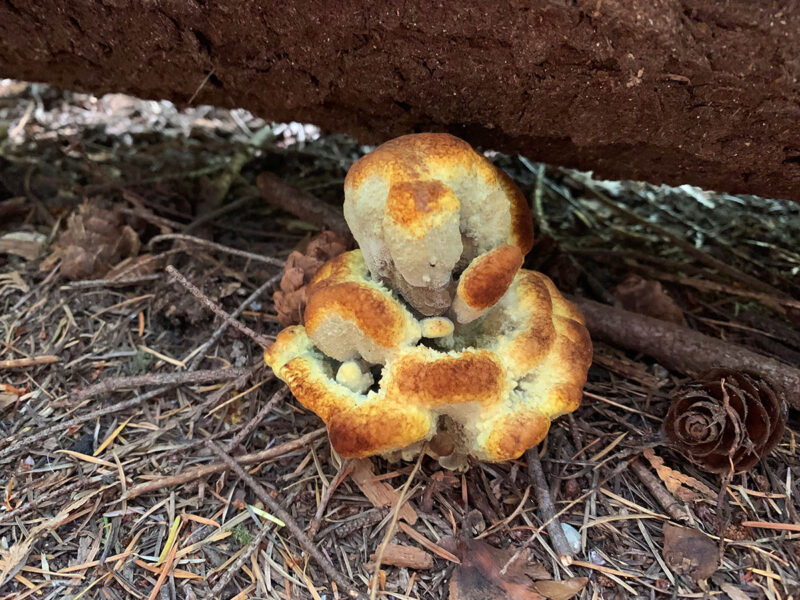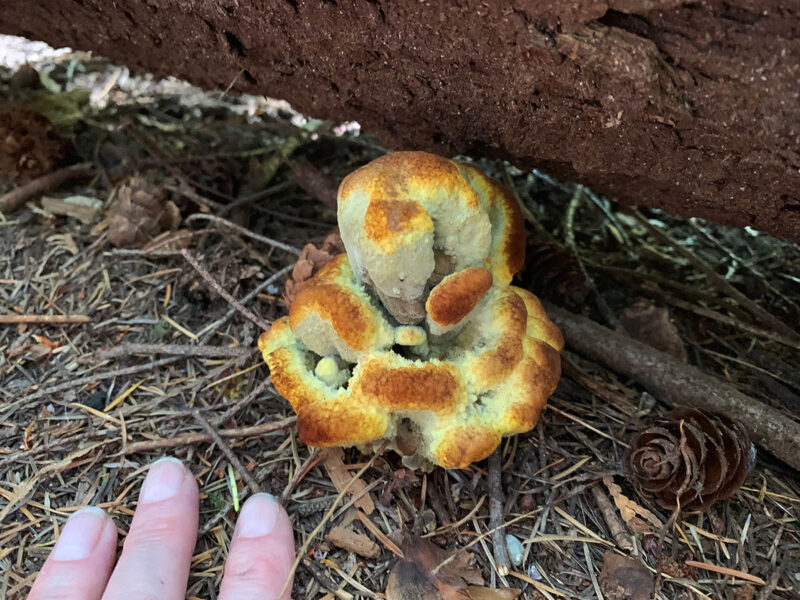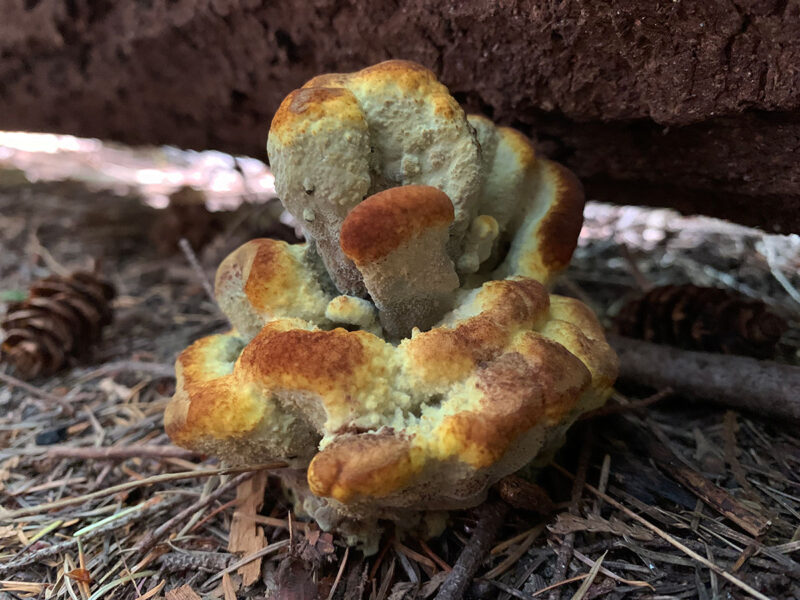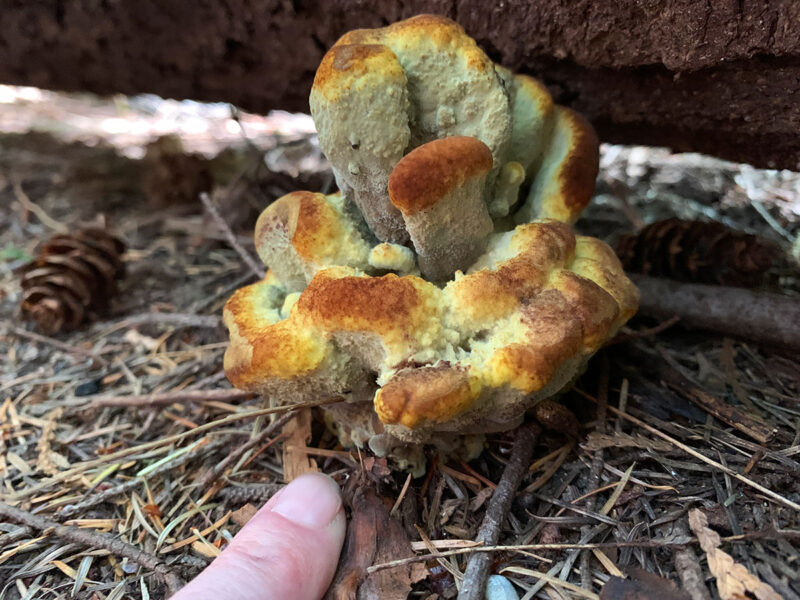The best thing about getting older (or just plain old) is that you can see something you swear you’ve never seen before, but guess what? You have! And you’ve forgotten. We ran across these Phaeolus schweinitzii aka Velvet-top fungus, dyer’s polypore, dyer’s mazegill or pine dye polypore today and thought they were so cool. When McDowell returned to her computer she saw that in 2021, we also found one. I mean they’re not rare but we don’t always see them.

To be fair, the shape of this velvet-top was pretty cool and unusual (for us at least). Reminded me of flower blossoming and looked like fresh bread. Two of my many favourite things. It was a warm day, but when we touched it it was cool to the point of being cold and was very velvety soft. Just so fun to see.



About the Phaeolus schweinitzii
A fungal plant pathogen that causes butt rot on conifers such as Douglas-fir, spruce, fir, hemlock, pine, and larch. P. schweinitzii is a polypore, although unlike bracket fungi the fruiting body may appear terrestrial[citation needed] when growing from the roots or base of the host tree.
As its common name suggests, the dyer’s polypore is an excellent natural source of green, yellow, gold, or brown dye, depending on the material dyed and the mordant used.
The fruiting bodies, appearing in late summer or fall, commonly incorporate blades of grass, twigs, or fallen pine needles as they grow. They are tannish with darker brown centres, with orange to pale margins on young specimens. As the fruiting bodies age, the pore surface turns from yellow to greenish yellow, the top becomes darker, and the yellow-brown fleshbecomes harder and more wood-like. The pores bruise brown. The spores are white, elliptical, smooth, and inamyloid.
More information: Phaeolus schweinitzii: Wikipedia